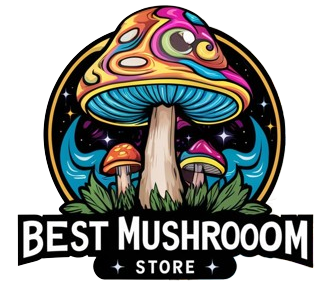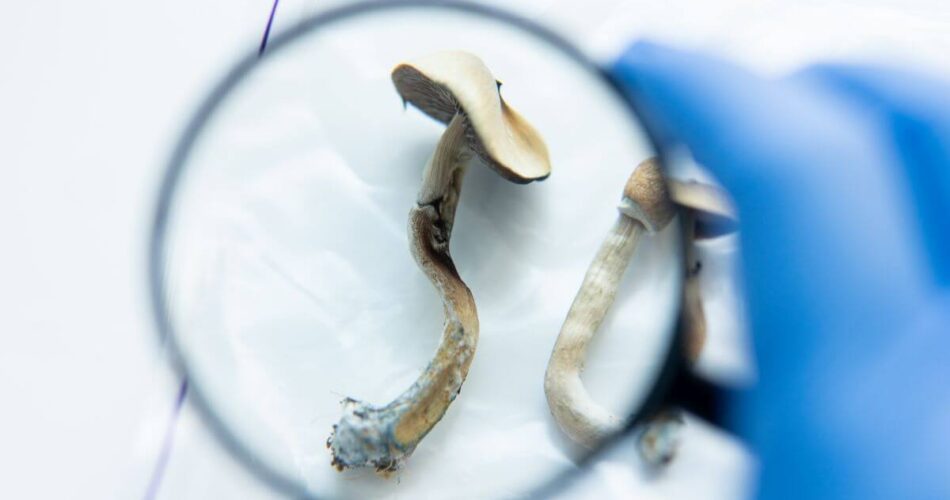Mushrooms are strange and wonderful things. Some of them are poisonous, while others can be eaten safely. Psilocybe subaeruginosa is a type of mushroom that has both psychoactive and antibiotic properties. Let’s find out more about this species.
In this post, we’ll discuss the history, appearance, and effects of the Psilocybe subaeruginosa mushroom. If you are interested in fungi world, you’ll definitely find it interesting.
Psilocybe Subaeruginosa – History
Psilocybe subaeruginosa is a species of psilocybin mushroom that is native to Australia and New Zealand. It was first described by Australian mycologist John Burton Cleland in 1927. The specific epithet “subaeruginosa” refers to the blue-green coloration of the mushroom’s stipe (stem).
Psilocybe subaeruginosa has a long history of use by Aboriginal peoples in Australia. The earliest written record of its use comes from the journal of explorers Burke and Wills, who noted its use by Aboriginal people in 1860. They observed the mushroom being used by Aboriginal people and noted its psychoactive effects.
Psilocybe Subaeruginosa – Morphology
Psilocybe subaeruginosa is a small to medium-sized mushroom with a cap that is 2.5-7 cm in diameter. The caps are conical to convex in shape and have a brownish to reddish brown color. The gills are adnate to slightly decurrent and brown in color. The spore print is dark brown. The stem is 5-10 cm long and 0.5-1.5 cm in diameter. It is white to cream-colored with a brownish annulus near the top. The flesh of Psilocybe subaeruginosa is white to cream-colored. A white partial veil soon disappears and often leave traces in the upper stipe.
Distribution and Habitat of a Psilocybe Subaeruginosa
Psilocybe subaeruginosa is a member of the Strophariaceae family of fungi, which also includes well-known psychoactive species such as Psilocybe cubensis and Psilocybe semilanceata. This species is native to Australia and New Zealand, where it grows on wood chip mulch, garden beds, and well-rotted logs or woody debris. It is also found in Tasmania, where it grows on forest floor litter. It is a common mushroom in urban areas, and its popularity as a psychedelic has resulted in it being cultivated commercially in some countries.
This mushroom should not be confused with the poisonous Galerina species which also have brown caps and brown gills. Psilocybe subaeruginosa can be distinguished by its smaller size, paler cap and the fact that its gills are attached to the stem.
Is Psilocybe Subaeruginosa a Magic Mushroom?
There is much debate surrounding the classification of Psilocybe subaeruginosa. Some experts believe that it is a separate species of mushroom, while others believe that it is a variety of Psilocybe cubensis. However, there is no denying that this mushroom has some very unique properties.
For instance, Psilocybe subaeruginosa is one of the few very potent mushrooms that contains high levels of psilocybin and psilocin. These compounds are responsible for the psychedelic effects that people experience when they consume this mushroom. In addition, Psilocybe subaeruginosa also contains high levels of baeocystin and norbaeocystin. These two chemicals are thought to contribute to the visual and auditory hallucinations that people often experience when they consume this psilocybe mushroom.
Be careful while picking up shrooms in the wild. There are many similar species that turns out to be toxic mushrooms. Thanks for reading!
Similar Posts:
- Psilocybe Bohemica: A Psilocybin Mushroom From Europe. All the Information You Need to Know About the Species
- Psilocybe Subaeruginascens: All You Should Know About Magic Shrooms Species
- Types of Magic Mushrooms – Psychedelic Effects, Potency, Psilocybin Content, Characteristics, and More
- Psilocybe Baeocystis – Unusual Psilocybin Species. Identification, Potency & Characteristics
- Magic Mushrooms: How to Identify Magic Mushrooms and Types of Magic Mushrooms
- Psilocybe Caerulipes – Description of a Magic Mushroom, Its Potency and Habitat
- Psilocybe Fimetaria: All You Should Know About This Magic Mushrooms Species




